Explorer Archetype
Seeking Growth with a Nuanced Experiential Brand (with Design Examples)
Daring and non-conformist with a focus on lived experience, the Explorer Brand Archetype is one of Jung’s 12 Brand Archetypes.
If you’re wondering, how can you build a Explorer brand that embraces nuance and deeply connects with your people, you’ve come to the right place.
Many of the entrepreneurs and businesses who reach out to me feel confused about how to create a multifaceted, nuanced Explorer brand that feels unique to them.
So I decided to create this guide, just for you.
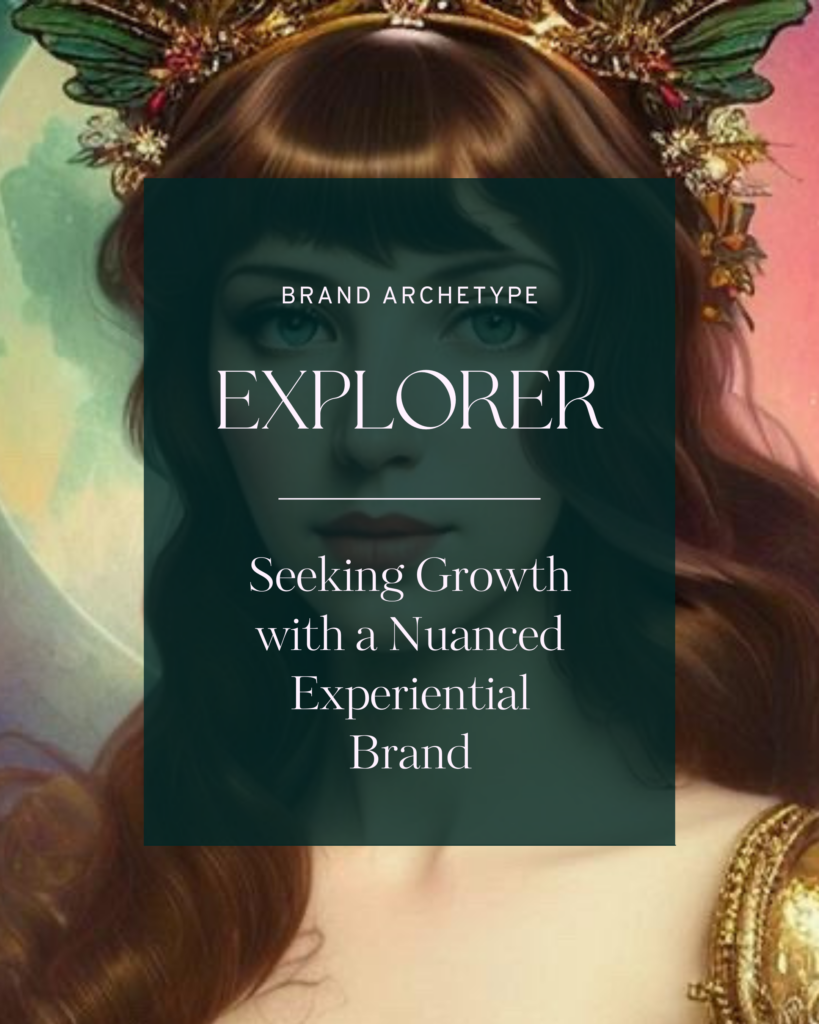
Explorer archetype in branding: What is it?
Let’s first dive into the Explorer brand persona in its pure, undiluted form.
Explorer archetype symbolism
The Explorer archetype blends patience and perseverance to stay the path toward wisdom. Exuding authenticity, curiosity and a hunger for discovery, this brand archetype aims to break free from societal norms in the search for sinner meaning and personal truth. This often means self-transformation through exploration and openness to new experiences.
Individualistic, youthful, curious and non-conformist, the Explorer archetype identifies with the outsider. Driven by a deep desire to expand understanding and find what fits with their inner needs, preferences and hopes, Explorers crave freedom. They seek to live in their own version of paradise – an outer world experience that is a match for their deepest inner desires, needs, preferences and hopes.
Stereotypically, this leads Explorers to hit the open road and seek out the wild, wide-open spaces of nature. But this exploration can take the form of surfing the net at home, exploring not so much physically, but through a whole world of information.

The Explorer’s…
DESIRE: Freedom to find out who you are through exploring the world
GOAL: Experience a better, more authentic, more fulfilling life
FEAR: Getting trapped, conforming, inner emptiness, nonbeing
TRAP: Aimless wandering, becoming a misfit
GIFT: Autonomy, ambition, ability to be true to one’s own soul
STRATEGY: Journey, seek out & experience new things, escape from entrapment and boredom
The Explorer is all about expressing individuality and travelling your own path in life. In contrast to the Creator and Rebel archetypes, individuality is about how we live, rather than what we make (Creator) or how we present (Rebel).
Businesses that embody a healthy Explorer archetype have a relentless curiosity and a thirst for discovery. They thrive on pushing boundaries, seeking new horizons, and venturing into uncharted territories.
These businesses have a deep appreciation for exploration as a means of growth and learning, both internally and externally. They encourage their employees to think outside the box, to challenge assumptions, and to embrace change.
In The Hero & The Outlaw, Margaret Mark talks about 5 Explorer Levels:
THE CALL: Alienation, dissatisfaction, restlessness, yearning, boredom
LEVEL 1: Hitting the open road, going out into nature, exploring the world
LEVEL 2: Seeking your own individuality, to individuate, to become fulfilled
LEVEL 3: Expressing individuality & uniqueness
THE SHADOW: Being so alienated, you cannot find a way to fit in
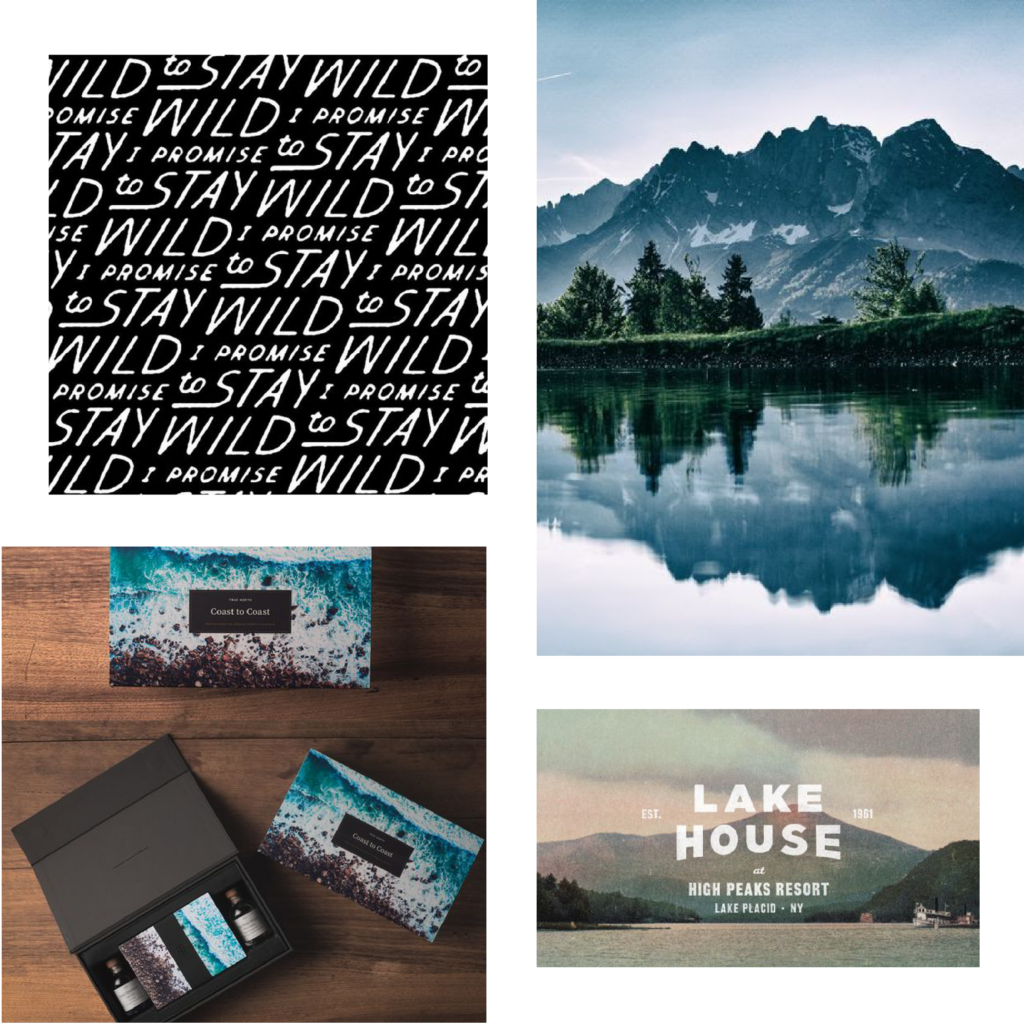
“Okay, the Explorer Brand Archetype sounds like what I’m going for. What next?”
If the Explorer archetype feels like a good fit, brilliant! Before we get too deep into the world of Jung and the Explorer archetype, I want to share a little secret as a Branding Expert: Being too tethered to Jung’s original psychology and clinging to one single generic archetype will shoot your brand in the foot.
Why? Humans connect with humans. We are all unique combinations of our innate natures and experiences.
As a result, our brands need to reflect what our businesses bring to the table in an authentic way. We build trust by aligning our presentation with our business experience (behaviour).
I’m sure you’ve noticed many brand strategists insist on a rigid approach to brand strategy. They teach their clients that a business has to wholeheartedly embody one single archetype, perhaps with a secondary support, paving the way for generic sameness.
But embodying one single archetype leads to generic brands that don’t connect with anyone. Especially if you want to stand out from your competitors in a saturated market that is continually growing.
It is human nature to explore and meld ideas together in new interesting ways. Evolution is inevitable!
Yes, we do need to narrow the field to make sure that we have a style and personality to embody. We cannot be all things to all people.
But we can and should create beautiful, unique combinations that allow us to embrace what sets us/our business apart, instead of feeling guilt or shame at not perfectly fitting into the current boxes.
When we begin to think about what drives us, how we approach problems, our unique way of delivering our services, products or solutions… a more fascinating brandscape begins to take shape.
Brand archetypes offer a method to explore your brand, not a dogma to rigidly follow.
The best brand identities, the ones that will feel truly unique, authentic and connect with your audience, are always a multi-faceted combination of archetypes.
A strong brand strategy, rooted in a curated duo or triad of archetypes, is what will give your brand clarity while differentiating you from your competitors.
“Elise managed to draw my personal brand out of me like some kind of magic. With her guidance through archetype reflection, my brand is now so authentically me!
“Elise is one of those rare talents. I know she has produced for my business the most original and creative branding in my industry.
My favourite part of her branding process was finding out my Archetypes. This approach was so impactful but also a lot of fun! I learnt so much about myself, what makes me unique, and how I was going to show up and most of all, stand out in my industry. The experience made me feel so much more connected to my business and my brand.
Now, because my brand has been built on the foundation of my own, unique archetypes, every time I send an email with my signature, share a link to my website, or produce a document with my branding, I feel proud to, because it’s beautiful, professional, it’s authentic and it feels like me. The confidence that that gives you as a business owner, is priceless. Branding undoubtedly gives you that edge that never stops returning on its investment.
If you’re on the fence, get off – Elise is worth her weight in gold.“
– Shanley King – Art of Wealth Co.
As you bring more dimensionality to your brand, you’ll foster more trust because you’re being more human.
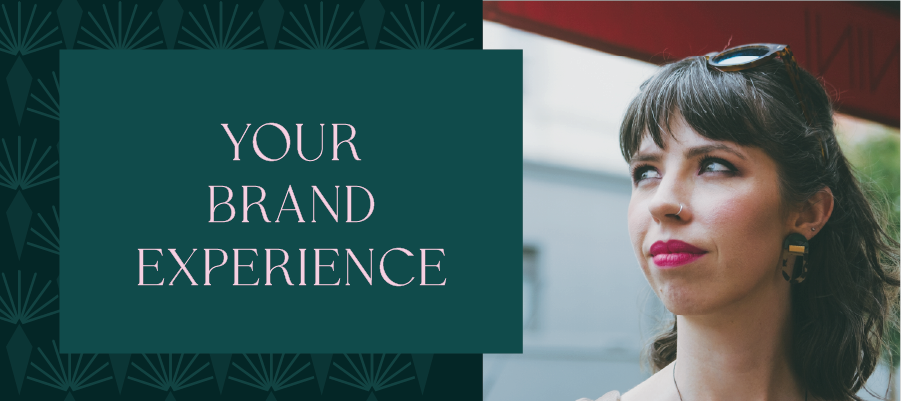
Practical questions to help you identify if your brand is a Explorer brand
Is Your Brand an Explorer? Let’s talk about brand values now.
Ask yourself: Is the goal of your company to push boundaries, challenge the status quo, and explore new horizons? Does your brand value the spirit of adventure and discovery, not just to maintain the status quo but to constantly evolve, innovate, and uncover new possibilities? If you answered yes, it is very likely your brand has Explorer energy.
To attract the right customers, maintain their trust and get the most from your marketing dollars, you should do all you can to communicate this philosophy to your customers.
“You helped me to understand myself AND my business and how I could marry the two together so that my business branding was speaking for me and through me.
The brand archetypes were a huge part of bringing that to light for me. I definitely felt more aligned and connected with what we were building and my business vision.“
– Elise Osborne – Helping Hearts Psychology
To diagnose the true motivator behind your brand (which is the crucial first step to discover your most aligned brand archetypes), take my brand motivator quiz.
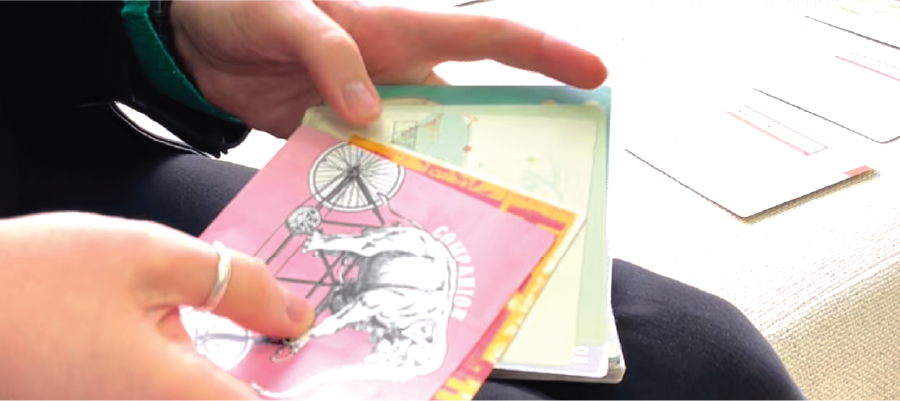
How to make your Explorer brand identity truly memorable and unique
In my work with my clients, I always work to help them claim a combination of archetypes, rather than a single one. Since Jung’s brand archetypes are naturally fluid and flow across one another, there are endless ways to blend them together.
For example, one wing might look like a Motivator (an archetype that highlights how you want to make people feel) and one wing might be your Approach (how you deliver that feeling). Different combinations of archetypes can create vastly different brand identities.
“I’m so in love with Elise and the recent brand strategy work she did for me! I was over the moon with the results and it really felt like she got EXACTLY what the core of my brand was, and developed it in a concise, strong and cohesive way.
I’m so glad I engaged with her to bring my new website to life – I feel like I’ve learned so much and have a much clearer view on what I’m about! I highly recommend her wherever you are in the branding process – whether you’re just starting out, or if you’re refining your brand and taking it to the next level like me. Thank you Elise, you’re a superstar!!”
– Danee – Killer Queen Creative
If there’s one thing I want you to take away from this article, it’s to let go of your preconceptions about what a certain brand archetype must look like.
Explorer archetype and brand differentiation
Jung proposed a variety of different subcategories for the Explorer archetype, each reflecting a different dimension of the Explorer. We can use these to add layers of nuance to a Explorer brand.
Adventurer
Explorer
Generalist
Pioneer
Seeker
Leveraging these will help you bring more nuance to your Explorer brand identity. Ideally, you will go further than this and blend multiple archetypes together without leaning into cliche characteristics.
Explorer archetype and target audience
Explorers seek a better world. Practically, this means the Explorer archetype delivers a customer experience that is immersive, transformative and unique. A templated approach to business or life simply won’t do!
From the moment customers engage with the brand, they are taken on a journey of discovery and exploration. Every interaction is carefully crafted to ignite customers’ curiosity, inspire them to see the world through a new lens, and leave them with a sense of awe and wonder. Often, they focus on the customers’ individuality, independence and ownership over their own story.
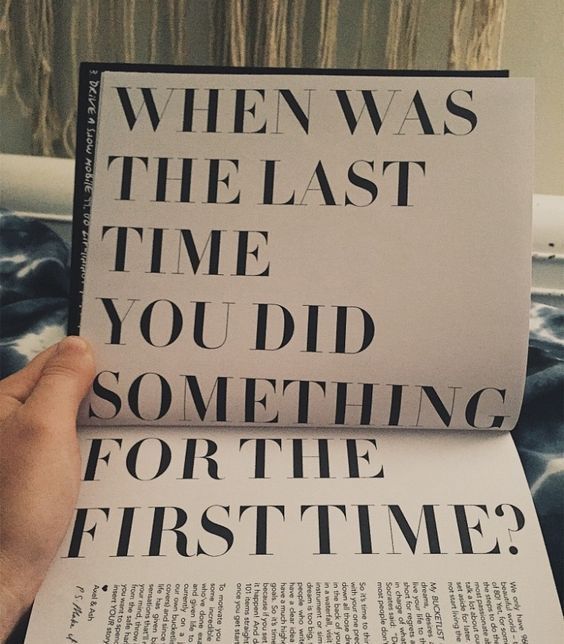
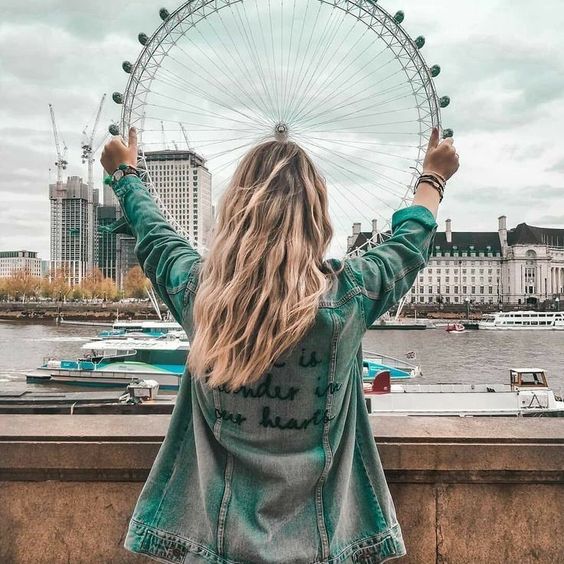
Examples of Explorer brands include Patagonia and Intrepid, which empower discovery and promote the ideal of a life where we’re ready for anything.
The book, Big Magic: Creative Living Beyond Fear, by Elizabeth Gilbert tells the story of a woman who realises she’s living a life that feels empty and belongs to someone else’s story.
She follows her dreams and desires to discover a life that’s hers.
Another book that comes to mind is ‘Building a Storybrand’ by Donald Miller, which teaches brands how to position themselves as the guide in their customers’ ‘Hero’ journey.
Explorers love to be empowered with ways to live lighter, while still having everything they need to live a full life.
Creative entrepreneurs and coaches who have a curious, open-minded ‘Seeker’ or ‘Guide’ approach to solving clients’ challenges are often Explorers. More broadly, industries like travel and tourism, psychology, coaching, creative consultants, music, elopement photographers, nature conservation, adventure sports and outdoor recreation, and experiential education often have Explorer energy.
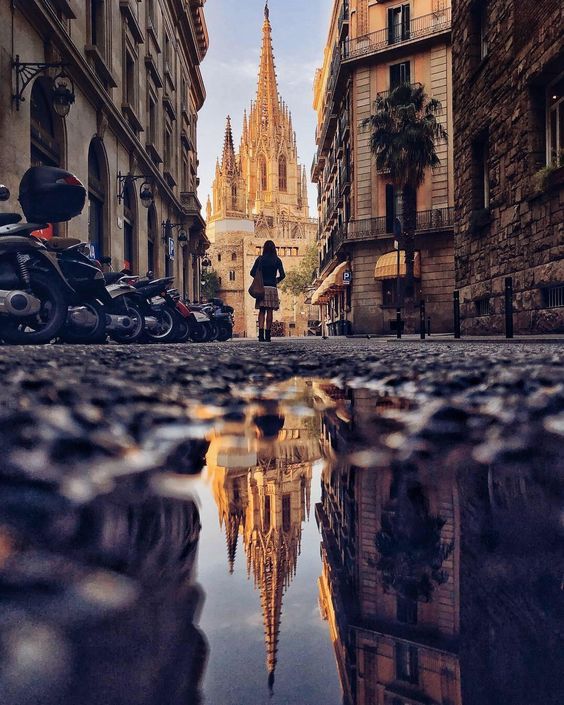
Strengths and weaknesses of the Explorer Archetype in marketing and advertising
In order to create a Explorer brand that resonates, my best advice is to tap into your audience’s desire to live a life that’s theirs, that gives them freedom to explore when and where their heart desires.
Your goal as an Explorer brand is to help people discover who they are, their hopes and dreams.
The flip side is that it’s easy for Explorer brands to be perceived as generic with a constant use of pictures of beautiful mountains or backpackers. While discovery, trying new things, learning about the world and following curiosity is definitely one expression of this archetype, it’s just one facet of the bigger picture.
Exploration and novelty can happen anywhere… whether it’s walking down a different street in your neighbourhood, spontaneously trying out a new place or food to eat, or taking up a new hobby. Traditionally, Explorer energy drives a desire to explore the next destination on your travel list – which could be a breathtaking fjord, a European city, or a pristine beach… anywhere and anything new to explore and discover.
Explorer branding examples
Here are examples of the Explorer archetype in marketing and design in the wild.
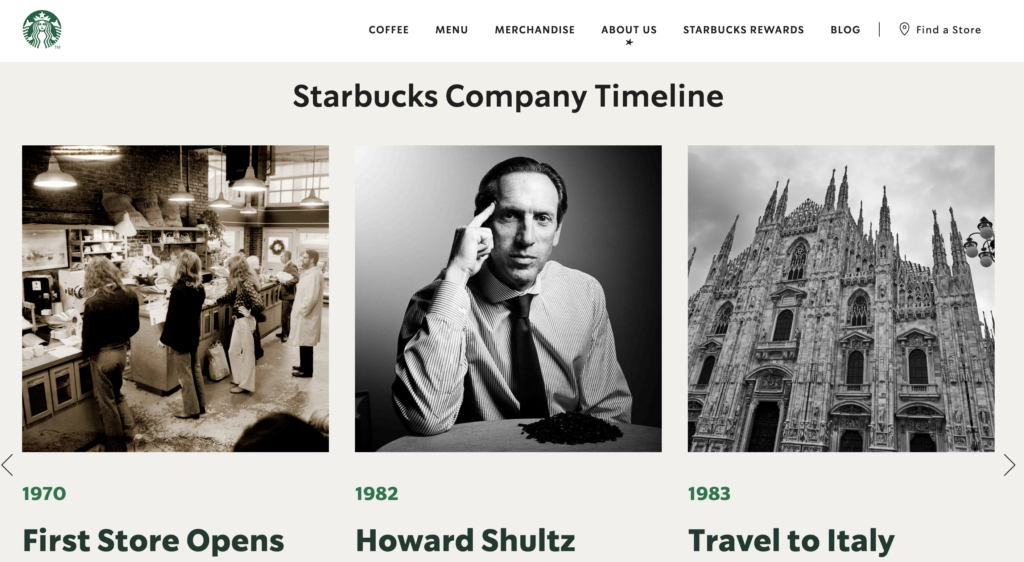
Starbucks is synonymous with coffee on the move. They have a ‘choose your own adventure’ product style with a different flavour for every mood. The option you choose ‘becomes a statement of personal identity.’
The name Starbucks is a literary reference to the classic American novel ‘Moby Dick’. Starbuck was the first mate on the whaling ship where the story took place – a solid stabiliser who attempts to balance the obsessive madness of the main character, Ahab, in his drive to take revenge on the whale who took his leg.
The Starbucks logo depicts a sea goddess, drawn from a 1659 French woodcut. Even the design of the store and fit-out reflects the materials of a ship, combining metal piping and wood.
The prominent primary colour, a deep shade of green, suggests an admiration for natural beauty and connects with the customers’ desire to act in an environmentally sustainable way.
The combination of a masculine name and feminine brand graphic creates an androgynous balance to connect with men, women and the perceived androgynous style of their younger target audience at the time of launch. All of these elements come together to create a cohesive brand story and identity grounded in the Explorer archetype.
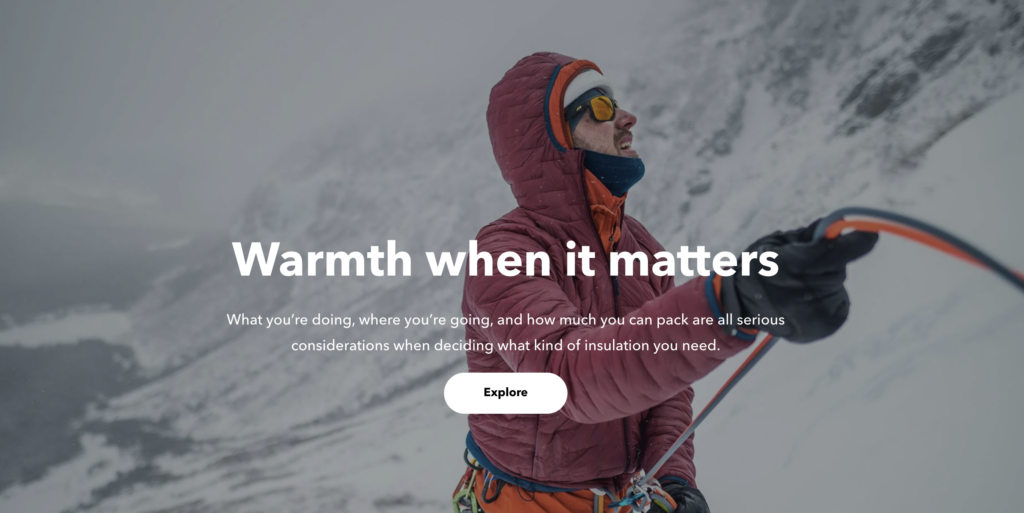
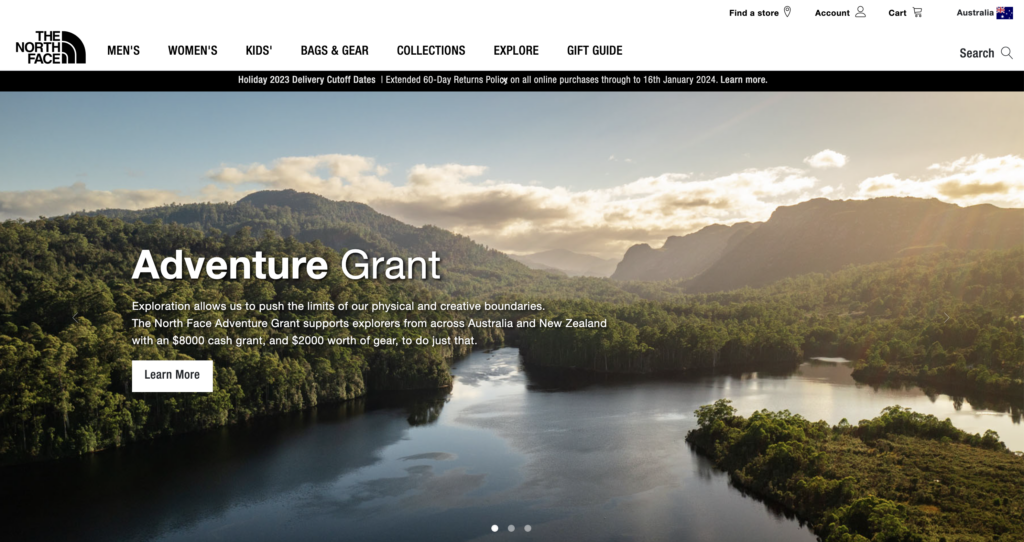
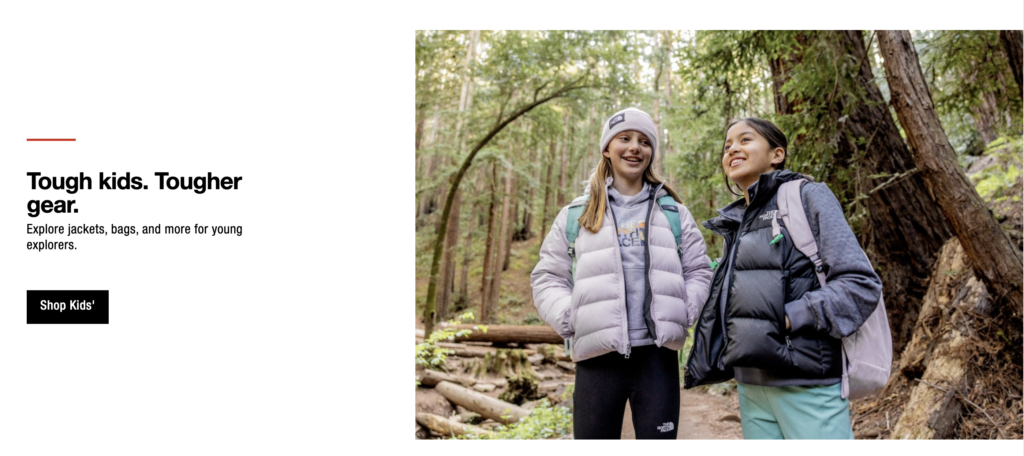
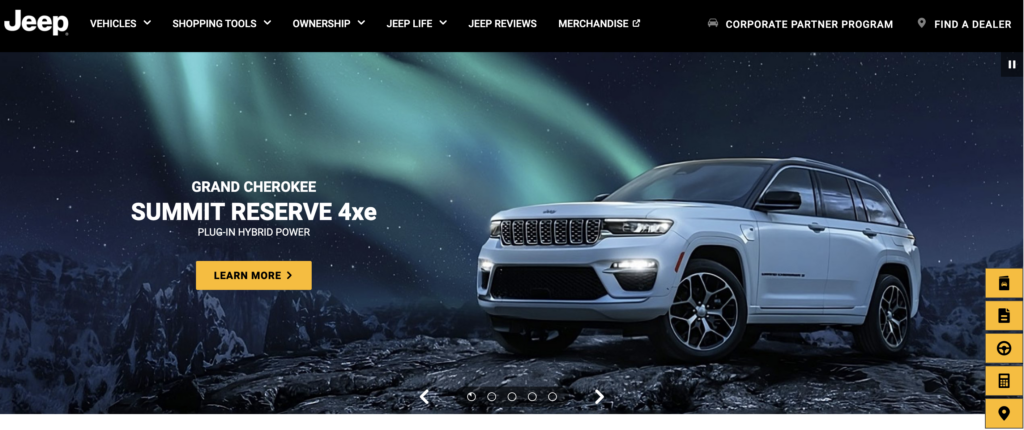
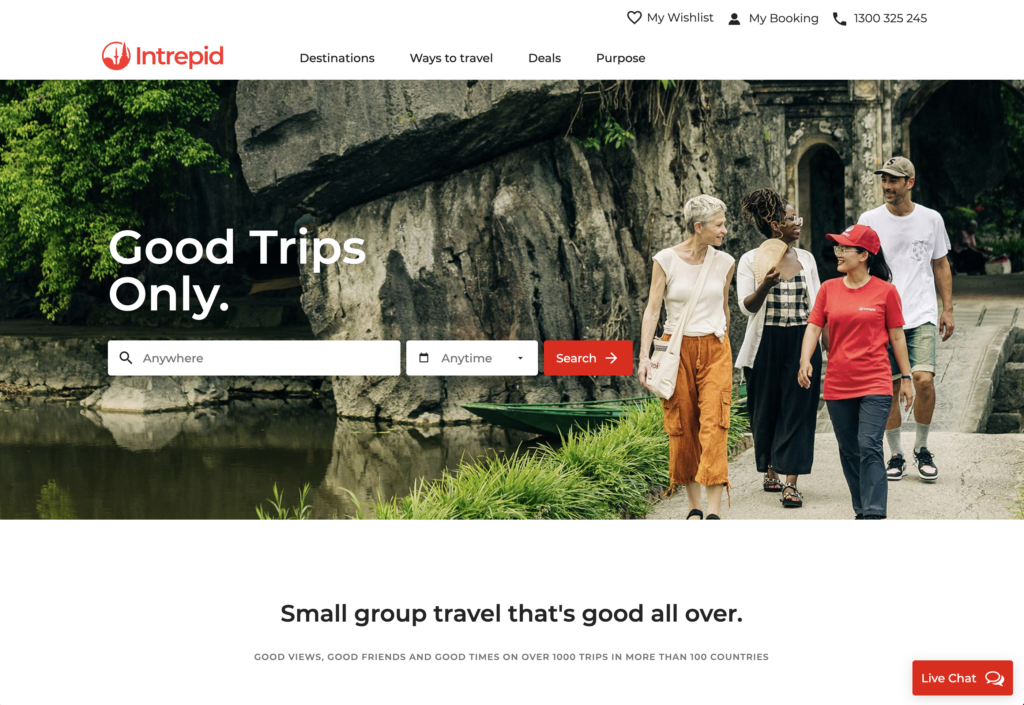
Here are some of the Creator brands I’ve had the pleasure of working with.
What are psychologists if not explorers of people’s inner psyche, walking with them on their own journeys of self-discovery and growth?
This psychology practice, founded by Elise Osborne, is a beautiful fusion of archetypes – Caregiver, Friend Next Door and Seeker (Explorer).
It’s often expected that Psychologists will play the role of Caregiver – though then where does their point of difference lie? Elise genuinely glows with caregiver warmth and she’s absolutely in it to provide the care that she believes people need.
She is driven by an inner desire to serve those who need her most. And she is on a continual journey of personal development and growth, constantly seeking to grow her skills and experience so that she can better serve in ways that are aligned with her personal values.
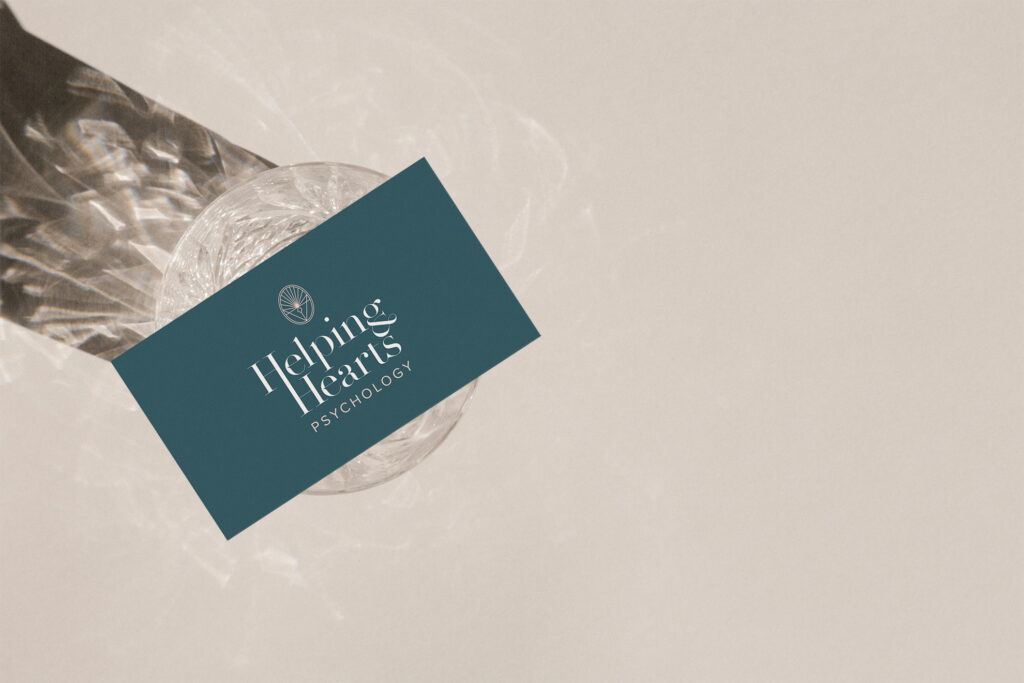
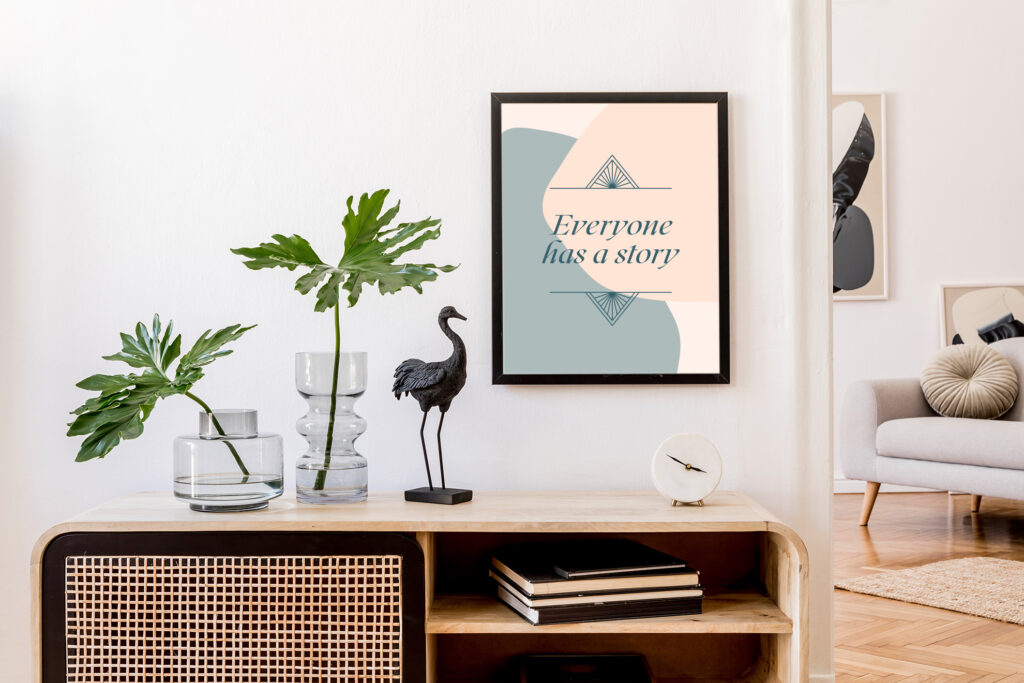

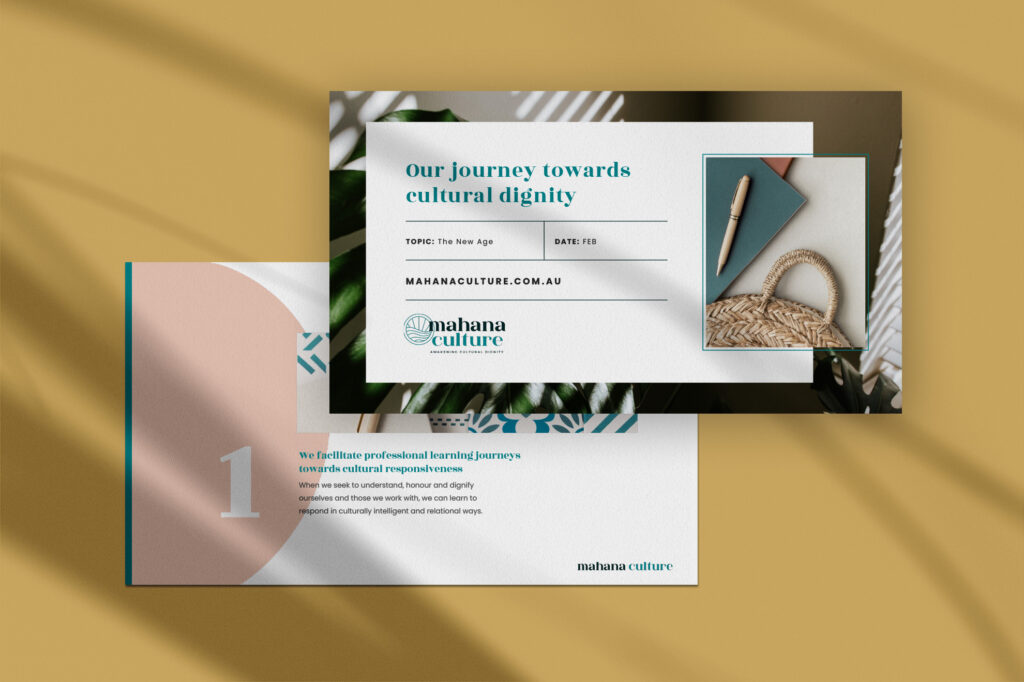
Layered Insights is a people insights consultant and coach, dedicated to building great teams and shaping brilliant leaders with self-awareness, individual success and fulfilment.
This brand combines a mix of Seeker (Explorer), Rebel, and Detective (Sage).

Percipience Psychology
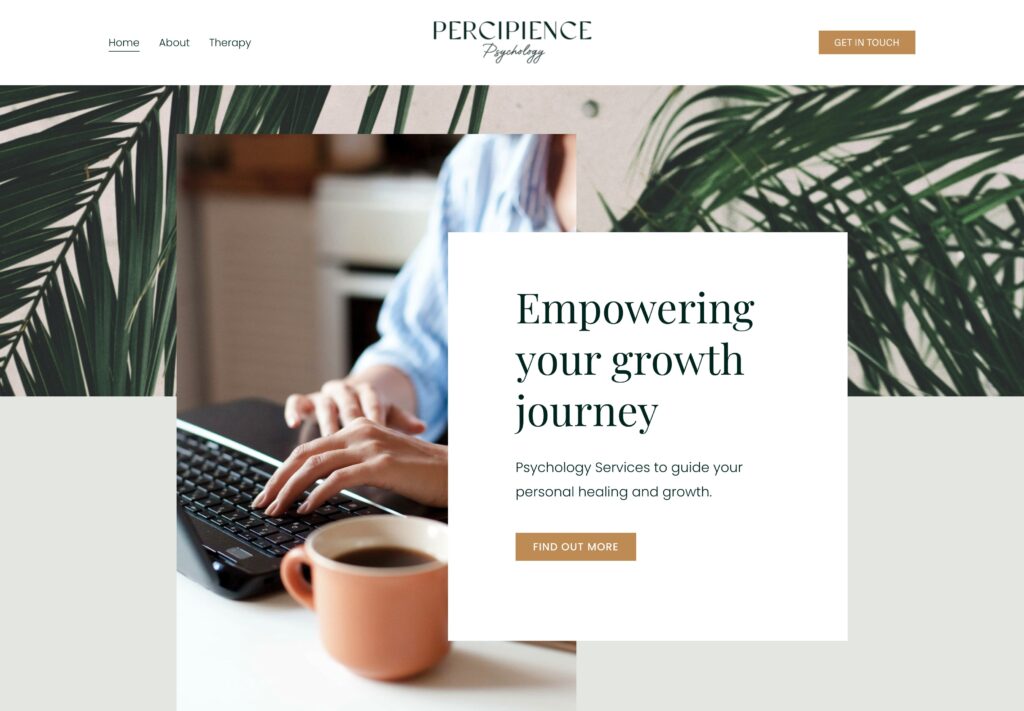
Designing for the Explorer archetype
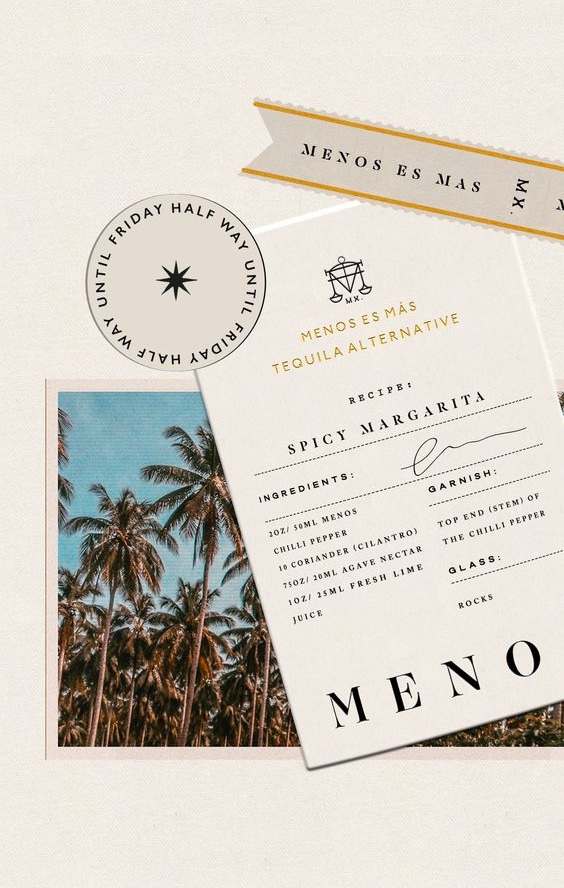
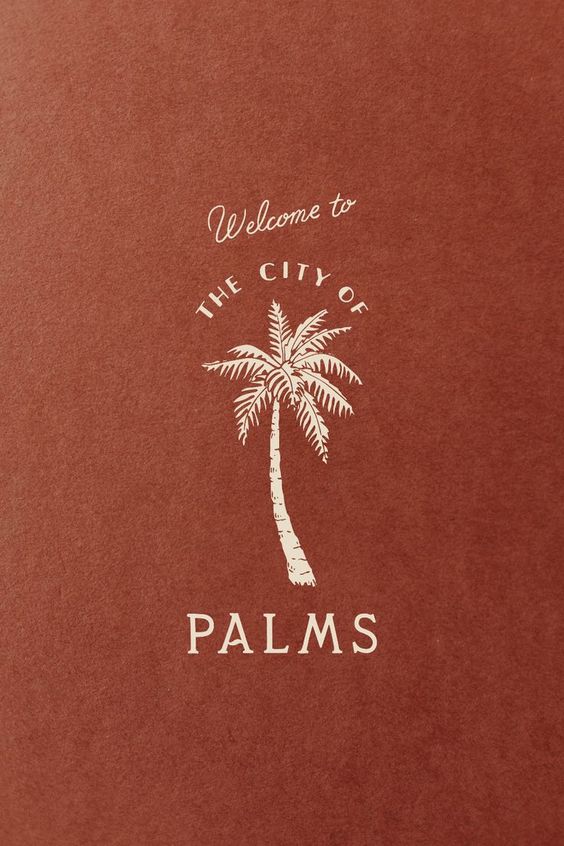
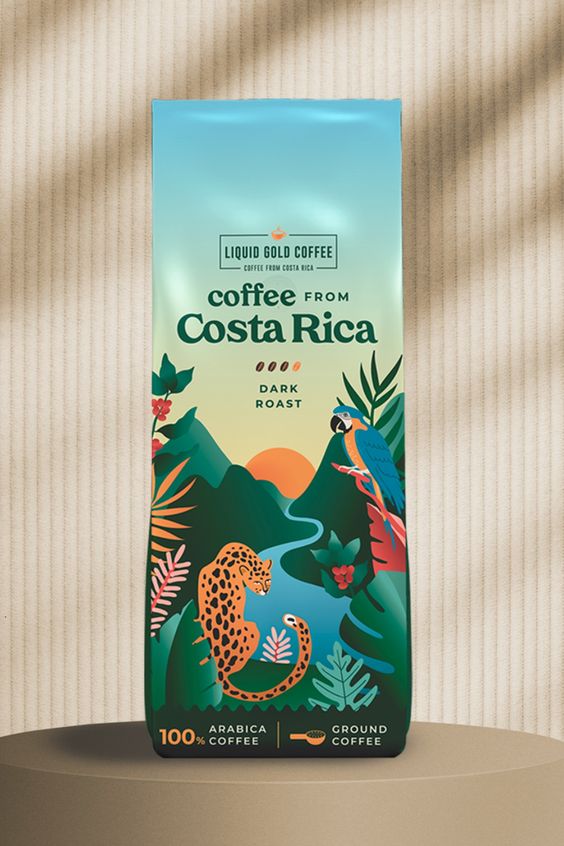
Explorer archetype and visual branding
In general, Explorer archetype visuals can be described as awe-inspiring, curiosity invoking, inviting, and captivating.
When it comes to brand storytelling, the graphics should capture the essence of your experiences or what people are being invited to experience. It may include organic elements or finishing, e.g. flora or greenery, vintage style, and type with textural feel.
Ideally, images should capture aesthetic details or textures that trigger memories of discoveries, life-enhancing experiences or stories collected along the way.
Explorer brands collect stories over things. Their objects can have high sentimental value because they’re linked to important stories.
Here is a curated Pinterest board I’ve created for the Explorer archetype.
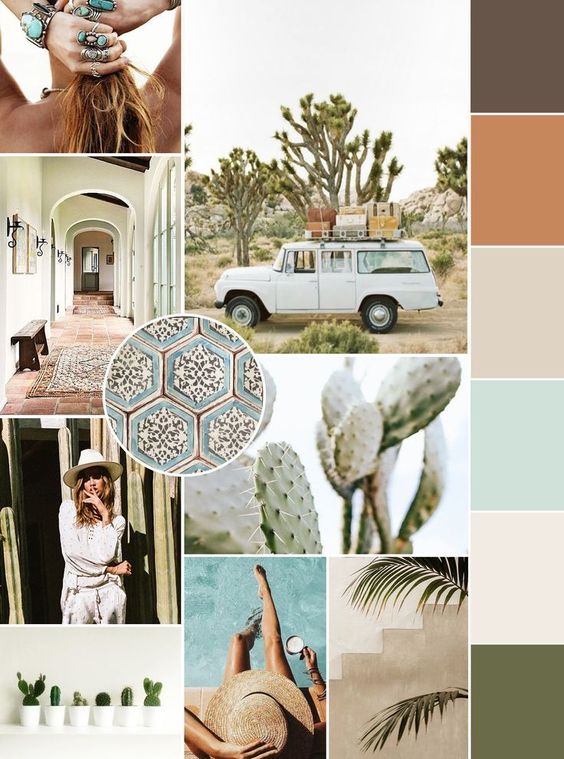
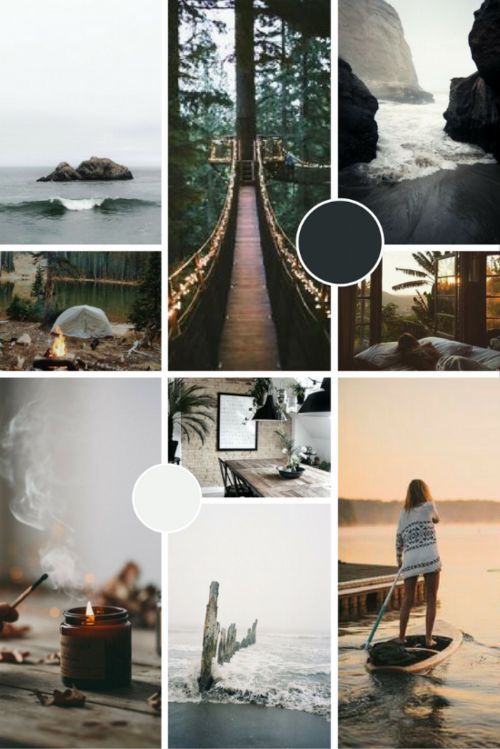
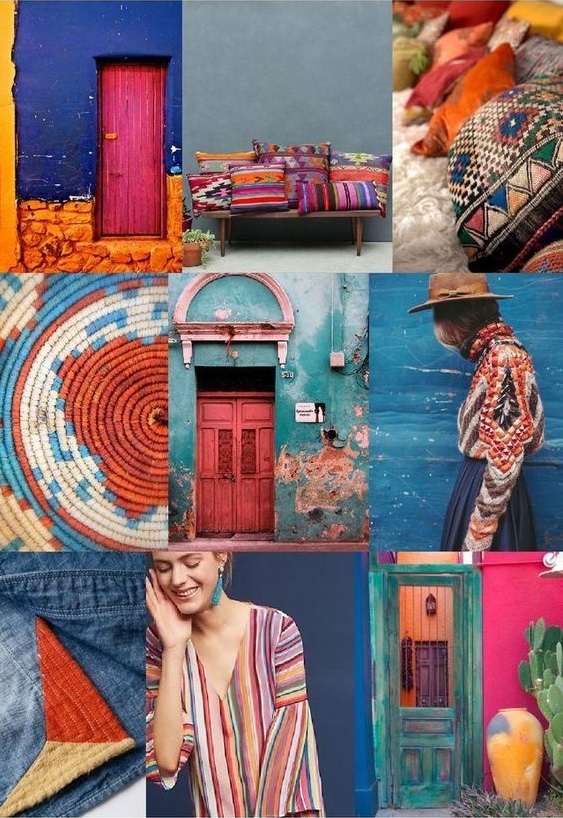
Explorer archetype design and colour psychology
The Explorer is all about novelty and discovery of new realms. This can encompass the broad expanses, peaks and troughs of nature. It can also include the memorable details of our experiences we gather everyday… seeking to discover new paths, new experiences, and new places. With an ‘eyes wide open’, take it all in approach, we gather pieces of the world around us and colours are simply a part of those experiences.
My best advice for this brand is to connect your colour palette with the journey you want to take people on. If you’re a brand that is offering treks or outdoor travel destinations, consider selecting colours that connect with the experience of those destinations. If your brand is all about discovery within urban landscapes, that is going to have a very different feel and colour palette.
The big things to note here are that yes we can definitely see more natural palettes or even minimalist palettes to capture this archetype’s expression. Though we can also have a vibrant palette too! Pick a combination that is a little unexpected to express the non-conformist nature of this archetype’s core motives.
A word on the Explorer archetype design and colour psychology
The use of colour in your brand design instantly affects the emotions and moods of the people viewing your brand.
Planning out your brand’s colour scheme can be challenging. I have two practical tips for you: 1) I recommend using primary and secondary colours that contrast well and 2) not being afraid to break traditional colour schemes in your industry.
Corporate colour schemes tend to be minimal while creative brands can include more colours.
If you know your audience belongs to a certain culture, always consider the meaning of the colours you choose within the context of that culture.
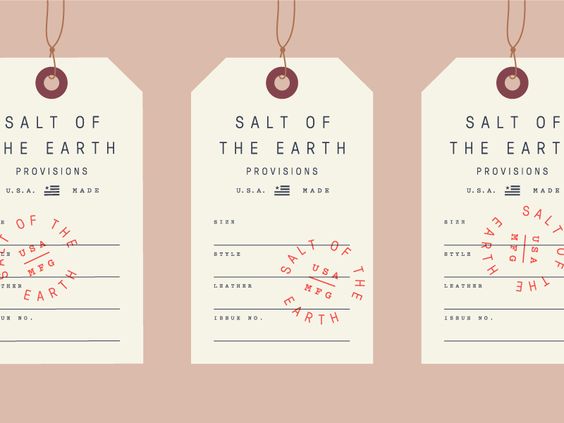
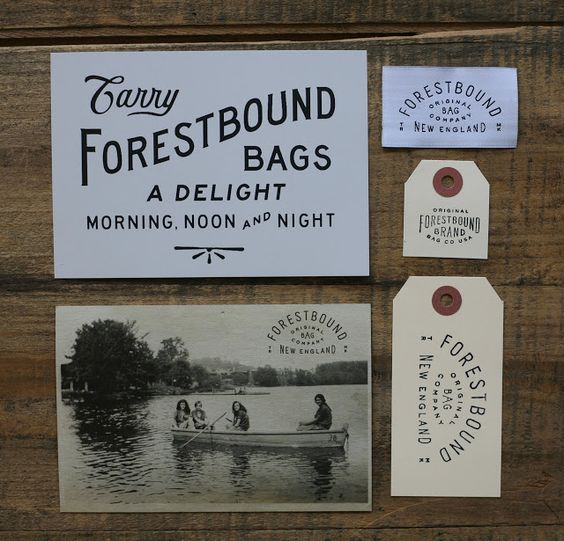
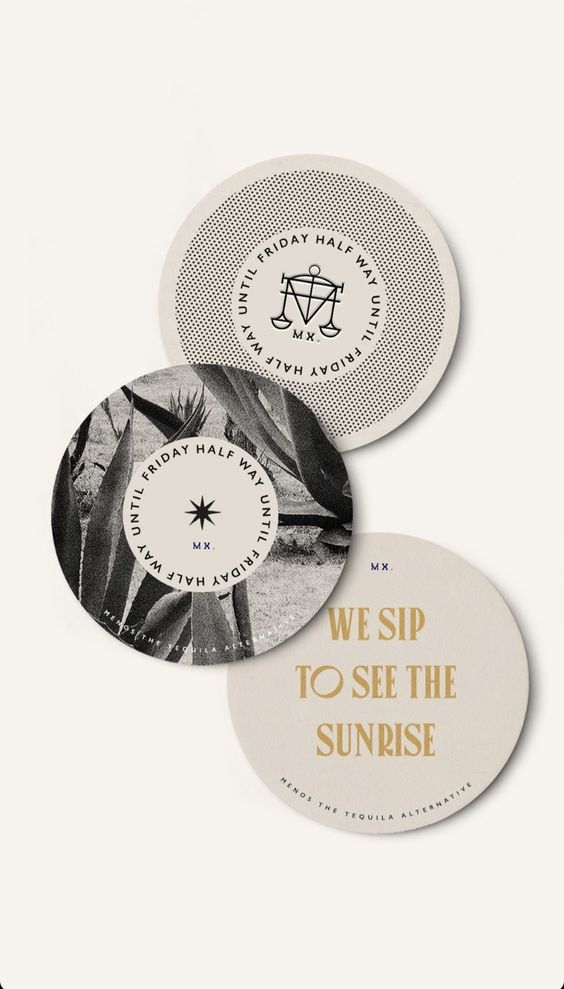
Explorer archetype and typography
The Explorer brand gravitates to typography styles that feel like they tell a story. For example, a vintage script font, handwritten journaling font style or rugged fonts.
Fonts can have interesting connecting details or ligatures. Ideally, they should be bold, clear and open with interesting compositions.
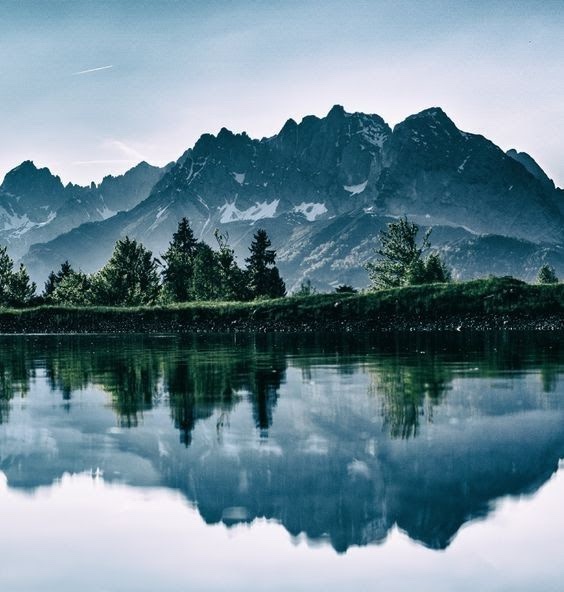
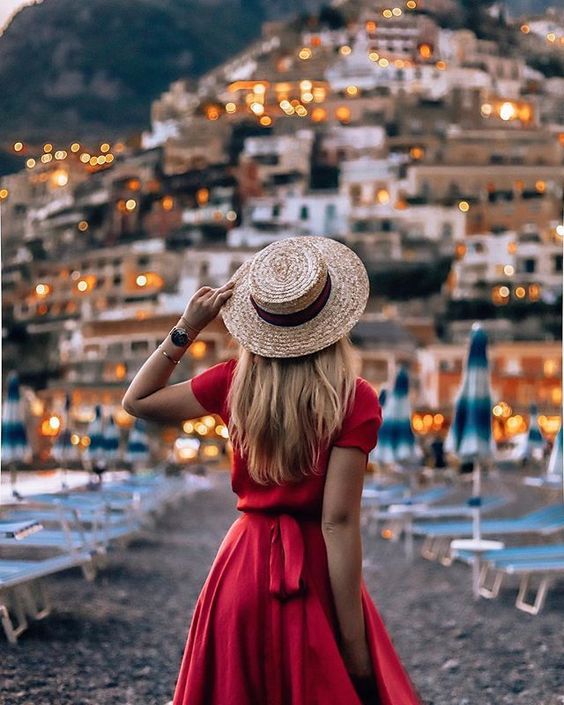
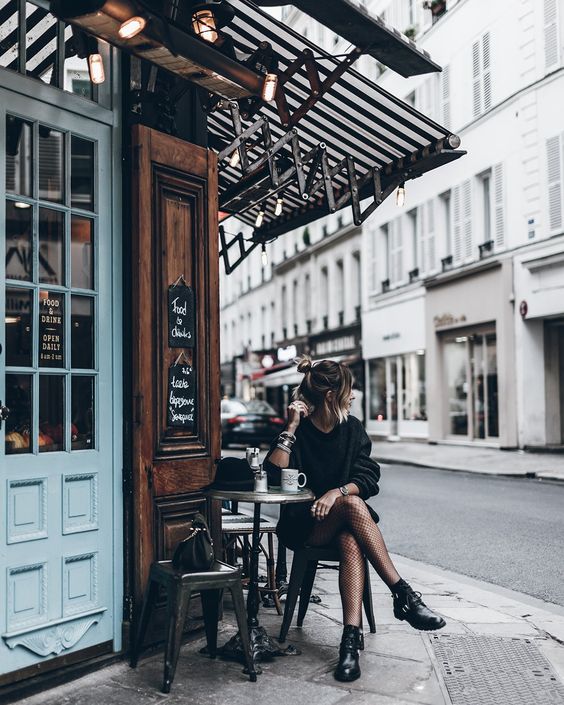
Explorer archetype and photography
Explorer photography can have a feeling of openness, evoking wide open spaces and a world full of opportunities. It aims to draw us in or make us want to become part of an experience – beckoning the senses through sight and texture.
Often, the photography aims to capture a unique perspective.
Explorer archetype and brand messaging
The Explorer brand voice is adventurous, inspiring and authentic.
Their voice says: “Embrace the thrill of the unknown and discover your own path.”
Branding with the Explorer archetype – Practical tips
Here are actionable tips to bring your Explorer brand to life with visual storytelling techniques.
Tips for showcasing your Explorer brand on Instagram
- Unlike other archetypes, the Explorer brand prioritises spontaneity and diversity over the need for perfect colour schemes and rigid consistency. Feel free to play, experiment and switch it up.
- Embrace the ephemeral nature of Stories to share real-time updates of your explorations or ideas. Take your audience along for the ride.
- Use Highlights to organise and curate your best content into themed collections. This allows new followers to quickly grasp the essence of your Explorer brand.
- Experiment with Instagram Reels or IGTV to showcase your explorations in dynamic and engaging formats. Video content can capture the essence of your brand vividly.
- Share how your explorations have transformed you or your work over time. Demonstrate personal growth and development through your creative journey.
Curious to discover your Brand Archetype? Start by taking this quiz to uncover your Core Motivator.

Pass the Salt, founded by Elise Elliott, is a branding studio devoted to shaking up brand strategy, design and creative direction for entrepreneurial dreamers, doers and shakers who smirk at rules and high-five at the adventure of exploration.
Elise’s branding framework helps clients find language for their authentic business identity, connect with their dream audience and find greater ease in their business.
Explorer Archetype
Seeking Growth with a Nuanced Experiential Brand (with Design Examples)
Daring and non-conformist with a focus on lived experience, the Explorer Brand Archetype is one of Jung’s 12 Brand Archetypes.
If you’re wondering, how can you build a Explorer brand that embraces nuance and deeply connects with your people, you’ve come to the right place.
Many of the entrepreneurs and businesses who reach out to me feel confused about how to create a multifaceted, nuanced Explorer brand that feels unique to them.
So I decided to create this guide, just for you.

Explorer archetype in branding: What is it?
Let’s first dive into the Explorer brand persona in its pure, undiluted form.
Explorer archetype symbolism
The Explorer archetype blends patience and perseverance to stay the path toward wisdom. Exuding authenticity, curiosity and a hunger for discovery, this brand archetype aims to break free from societal norms in the search for sinner meaning and personal truth. This often means self-transformation through exploration and openness to new experiences.
Individualistic, youthful, curious and non-conformist, the Explorer archetype identifies with the outsider. Driven by a deep desire to expand understanding and find what fits with their inner needs, preferences and hopes, Explorers crave freedom. They seek to live in their own version of paradise – an outer world experience that is a match for their deepest inner desires, needs, preferences and hopes.
Stereotypically, this leads Explorers to hit the open road and seek out the wild, wide-open spaces of nature. But this exploration can take the form of surfing the net at home, exploring not so much physically, but through a whole world of information.

The Explorer’s…
DESIRE: Freedom to find out who you are through exploring the world
GOAL: Experience a better, more authentic, more fulfilling life
FEAR: Getting trapped, conforming, inner emptiness, nonbeing
TRAP: Aimless wandering, becoming a misfit
GIFT: Autonomy, ambition, ability to be true to one’s own soul
STRATEGY: Journey, seek out & experience new things, escape from entrapment and boredom
The Explorer is all about expressing individuality and travelling your own path in life. In contrast to the Creator and Rebel archetypes, individuality is about how we live, rather than what we make (Creator) or how we present (Rebel).
Businesses that embody a healthy Explorer archetype have a relentless curiosity and a thirst for discovery. They thrive on pushing boundaries, seeking new horizons, and venturing into uncharted territories.
These businesses have a deep appreciation for exploration as a means of growth and learning, both internally and externally. They encourage their employees to think outside the box, to challenge assumptions, and to embrace change.
In The Hero & The Outlaw, Margaret Mark talks about 5 Explorer Levels:
THE CALL: Alienation, dissatisfaction, restlessness, yearning, boredom
LEVEL 1: Hitting the open road, going out into nature, exploring the world
LEVEL 2: Seeking your own individuality, to individuate, to become fulfilled
LEVEL 3: Expressing individuality & uniqueness
THE SHADOW: Being so alienated, you cannot find a way to fit in

“Okay, the Explorer Brand Archetype sounds like what I’m going for. What next?”
If the Explorer archetype feels like a good fit, brilliant! Before we get too deep into the world of Jung and the Explorer archetype, I want to share a little secret as a Branding Expert: Being too tethered to Jung’s original psychology and clinging to one single generic archetype will shoot your brand in the foot.
Why? Humans connect with humans. We are all unique combinations of our innate natures and experiences.
As a result, our brands need to reflect what our businesses bring to the table in an authentic way. We build trust by aligning our presentation with our business experience (behaviour).
I’m sure you’ve noticed many brand strategists insist on a rigid approach to brand strategy. They teach their clients that a business has to wholeheartedly embody one single archetype, perhaps with a secondary support, paving the way for generic sameness.
But embodying one single archetype leads to generic brands that don’t connect with anyone. Especially if you want to stand out from your competitors in a saturated market that is continually growing.
It is human nature to explore and meld ideas together in new interesting ways. Evolution is inevitable!
Yes, we do need to narrow the field to make sure that we have a style and personality to embody. We cannot be all things to all people.
But we can and should create beautiful, unique combinations that allow us to embrace what sets us/our business apart, instead of feeling guilt or shame at not perfectly fitting into the current boxes.
When we begin to think about what drives us, how we approach problems, our unique way of delivering our services, products or solutions… a more fascinating brandscape begins to take shape.
Brand archetypes offer a method to explore your brand, not a dogma to rigidly follow.
The best brand identities, the ones that will feel truly unique, authentic and connect with your audience, are always a multi-faceted combination of archetypes.
A strong brand strategy, rooted in a curated duo or triad of archetypes, is what will give your brand clarity while differentiating you from your competitors.
“Elise managed to draw my personal brand out of me like some kind of magic. With her guidance through archetype reflection, my brand is now so authentically me!
“Elise is one of those rare talents. I know she has produced for my business the most original and creative branding in my industry.
My favourite part of her branding process was finding out my Archetypes. This approach was so impactful but also a lot of fun! I learnt so much about myself, what makes me unique, and how I was going to show up and most of all, stand out in my industry. The experience made me feel so much more connected to my business and my brand.
Now, because my brand has been built on the foundation of my own, unique archetypes, every time I send an email with my signature, share a link to my website, or produce a document with my branding, I feel proud to, because it’s beautiful, professional, it’s authentic and it feels like me. The confidence that that gives you as a business owner, is priceless. Branding undoubtedly gives you that edge that never stops returning on its investment.
If you’re on the fence, get off – Elise is worth her weight in gold.“
– Shanley King – Art of Wealth Co.
As you bring more dimensionality to your brand, you’ll foster more trust because you’re being more human.

Practical questions to help you identify if your brand is a Explorer brand
Is Your Brand an Explorer? Let’s talk about brand values now.
Ask yourself: Is the goal of your company to push boundaries, challenge the status quo, and explore new horizons? Does your brand value the spirit of adventure and discovery, not just to maintain the status quo but to constantly evolve, innovate, and uncover new possibilities? If you answered yes, it is very likely your brand has Explorer energy.
To attract the right customers, maintain their trust and get the most from your marketing dollars, you should do all you can to communicate this philosophy to your customers.
“You helped me to understand myself AND my business and how I could marry the two together so that my business branding was speaking for me and through me.
The brand archetypes were a huge part of bringing that to light for me. I definitely felt more aligned and connected with what we were building and my business vision.“
– Elise Osborne – Helping Hearts Psychology
To diagnose the true motivator behind your brand (which is the crucial first step to discover your most aligned brand archetypes), take my brand motivator quiz.

How to make your Explorer brand identity truly memorable and unique
In my work with my clients, I always work to help them claim a combination of archetypes, rather than a single one. Since Jung’s brand archetypes are naturally fluid and flow across one another, there are endless ways to blend them together.
For example, one wing might look like a Motivator (an archetype that highlights how you want to make people feel) and one wing might be your Approach (how you deliver that feeling). Different combinations of archetypes can create vastly different brand identities.
“I’m so in love with Elise and the recent brand strategy work she did for me! I was over the moon with the results and it really felt like she got EXACTLY what the core of my brand was, and developed it in a concise, strong and cohesive way.
I’m so glad I engaged with her to bring my new website to life – I feel like I’ve learned so much and have a much clearer view on what I’m about! I highly recommend her wherever you are in the branding process – whether you’re just starting out, or if you’re refining your brand and taking it to the next level like me. Thank you Elise, you’re a superstar!!”
– Danee – Killer Queen Creative
If there’s one thing I want you to take away from this article, it’s to let go of your preconceptions about what a certain brand archetype must look like.
Explorer archetype and brand differentiation
Jung proposed a variety of different subcategories for the Explorer archetype, each reflecting a different dimension of the Explorer. We can use these to add layers of nuance to a Explorer brand.
Adventurer
Explorer
Generalist
Pioneer
Seeker
Leveraging these will help you bring more nuance to your Explorer brand identity. Ideally, you will go further than this and blend multiple archetypes together without leaning into cliche characteristics.
Explorer archetype and target audience
Explorers seek a better world. Practically, this means the Explorer archetype delivers a customer experience that is immersive, transformative and unique. A templated approach to business or life simply won’t do!
From the moment customers engage with the brand, they are taken on a journey of discovery and exploration. Every interaction is carefully crafted to ignite customers’ curiosity, inspire them to see the world through a new lens, and leave them with a sense of awe and wonder. Often, they focus on the customers’ individuality, independence and ownership over their own story.


Examples of Explorer brands include Patagonia and Intrepid, which empower discovery and promote the ideal of a life where we’re ready for anything.
The book, Big Magic: Creative Living Beyond Fear, by Elizabeth Gilbert tells the story of a woman who realises she’s living a life that feels empty and belongs to someone else’s story.
She follows her dreams and desires to discover a life that’s hers.
Another book that comes to mind is ‘Building a Storybrand’ by Donald Miller, which teaches brands how to position themselves as the guide in their customers’ ‘Hero’ journey.
Explorers love to be empowered with ways to live lighter, while still having everything they need to live a full life.
Creative entrepreneurs and coaches who have a curious, open-minded ‘Seeker’ or ‘Guide’ approach to solving clients’ challenges are often Explorers. More broadly, industries like travel and tourism, psychology, coaching, creative consultants, music, elopement photographers, nature conservation, adventure sports and outdoor recreation, and experiential education often have Explorer energy.

Strengths and weaknesses of the Explorer Archetype in marketing and advertising
In order to create a Explorer brand that resonates, my best advice is to tap into your audience’s desire to live a life that’s theirs, that gives them freedom to explore when and where their heart desires.
Your goal as an Explorer brand is to help people discover who they are, their hopes and dreams.
The flip side is that it’s easy for Explorer brands to be perceived as generic with a constant use of pictures of beautiful mountains or backpackers. While discovery, trying new things, learning about the world and following curiosity is definitely one expression of this archetype, it’s just one facet of the bigger picture.
Exploration and novelty can happen anywhere… whether it’s walking down a different street in your neighbourhood, spontaneously trying out a new place or food to eat, or taking up a new hobby. Traditionally, Explorer energy drives a desire to explore the next destination on your travel list – which could be a breathtaking fjord, a European city, or a pristine beach… anywhere and anything new to explore and discover.
Explorer branding examples
Here are examples of the Explorer archetype in marketing and design in the wild.

Starbucks is synonymous with coffee on the move. They have a ‘choose your own adventure’ product style with a different flavour for every mood. The option you choose ‘becomes a statement of personal identity.’
The name Starbucks is a literary reference to the classic American novel ‘Moby Dick’. Starbuck was the first mate on the whaling ship where the story took place – a solid stabiliser who attempts to balance the obsessive madness of the main character, Ahab, in his drive to take revenge on the whale who took his leg.
The Starbucks logo depicts a sea goddess, drawn from a 1659 French woodcut. Even the design of the store and fit-out reflects the materials of a ship, combining metal piping and wood.
The prominent primary colour, a deep shade of green, suggests an admiration for natural beauty and connects with the customers’ desire to act in an environmentally sustainable way.
The combination of a masculine name and feminine brand graphic creates an androgynous balance to connect with men, women and the perceived androgynous style of their younger target audience at the time of launch. All of these elements come together to create a cohesive brand story and identity grounded in the Explorer archetype.





Here are some of the Creator brands I’ve had the pleasure of working with.
What are psychologists if not explorers of people’s inner psyche, walking with them on their own journeys of self-discovery and growth?
This psychology practice, founded by Elise Osborne, is a beautiful fusion of archetypes – Caregiver, Friend Next Door and Seeker (Explorer).
It’s often expected that Psychologists will play the role of Caregiver – though then where does their point of difference lie? Elise genuinely glows with caregiver warmth and she’s absolutely in it to provide the care that she believes people need.
She is driven by an inner desire to serve those who need her most. And she is on a continual journey of personal development and growth, constantly seeking to grow her skills and experience so that she can better serve in ways that are aligned with her personal values.




Layered Insights is a people insights consultant and coach, dedicated to building great teams and shaping brilliant leaders with self-awareness, individual success and fulfilment.
This brand combines a mix of Seeker (Explorer), Rebel, and Detective (Sage).

Percipience Psychology

Designing for the Explorer archetype



Explorer archetype and visual branding
In general, Explorer archetype visuals can be described as awe-inspiring, curiosity invoking, inviting, and captivating.
When it comes to brand storytelling, the graphics should capture the essence of your experiences or what people are being invited to experience. It may include organic elements or finishing, e.g. flora or greenery, vintage style, and type with textural feel.
Ideally, images should capture aesthetic details or textures that trigger memories of discoveries, life-enhancing experiences or stories collected along the way.
Explorer brands collect stories over things. Their objects can have high sentimental value because they’re linked to important stories.
Here is a curated Pinterest board I’ve created for the Explorer archetype.



Explorer archetype design and colour psychology
The Explorer is all about novelty and discovery of new realms. This can encompass the broad expanses, peaks and troughs of nature. It can also include the memorable details of our experiences we gather everyday… seeking to discover new paths, new experiences, and new places. With an ‘eyes wide open’, take it all in approach, we gather pieces of the world around us and colours are simply a part of those experiences.
My best advice for this brand is to connect your colour palette with the journey you want to take people on. If you’re a brand that is offering treks or outdoor travel destinations, consider selecting colours that connect with the experience of those destinations. If your brand is all about discovery within urban landscapes, that is going to have a very different feel and colour palette.
The big things to note here are that yes we can definitely see more natural palettes or even minimalist palettes to capture this archetype’s expression. Though we can also have a vibrant palette too! Pick a combination that is a little unexpected to express the non-conformist nature of this archetype’s core motives.
A word on the Explorer archetype design and colour psychology
The use of colour in your brand design instantly affects the emotions and moods of the people viewing your brand.
Planning out your brand’s colour scheme can be challenging. I have two practical tips for you: 1) I recommend using primary and secondary colours that contrast well and 2) not being afraid to break traditional colour schemes in your industry.
Corporate colour schemes tend to be minimal while creative brands can include more colours.
If you know your audience belongs to a certain culture, always consider the meaning of the colours you choose within the context of that culture.



Explorer archetype and typography
The Explorer brand gravitates to typography styles that feel like they tell a story. For example, a vintage script font, handwritten journaling font style or rugged fonts.
Fonts can have interesting connecting details or ligatures. Ideally, they should be bold, clear and open with interesting compositions.



Explorer archetype and photography
Explorer photography can have a feeling of openness, evoking wide open spaces and a world full of opportunities. It aims to draw us in or make us want to become part of an experience – beckoning the senses through sight and texture.
Often, the photography aims to capture a unique perspective.
Explorer archetype and brand messaging
The Explorer brand voice is adventurous, inspiring and authentic.
Their voice says: “Embrace the thrill of the unknown and discover your own path.”
Branding with the Explorer archetype – Practical tips
Here are actionable tips to bring your Explorer brand to life with visual storytelling techniques.
Tips for showcasing your Explorer brand on Instagram
- Unlike other archetypes, the Explorer brand prioritises spontaneity and diversity over the need for perfect colour schemes and rigid consistency. Feel free to play, experiment and switch it up.
- Embrace the ephemeral nature of Stories to share real-time updates of your explorations or ideas. Take your audience along for the ride.
- Use Highlights to organise and curate your best content into themed collections. This allows new followers to quickly grasp the essence of your Explorer brand.
- Experiment with Instagram Reels or IGTV to showcase your explorations in dynamic and engaging formats. Video content can capture the essence of your brand vividly.
- Share how your explorations have transformed you or your work over time. Demonstrate personal growth and development through your creative journey.
Curious to discover your Brand Archetype? Start by taking this quiz to uncover your Core Motivator.

Pass the Salt, founded by Elise Elliott, is a branding studio devoted to shaking up brand strategy, design and creative direction for entrepreneurial dreamers, doers and shakers who smirk at rules and high-five at the adventure of exploration.
Elise’s branding framework helps clients find language for their authentic business identity, connect with their dream audience and find greater ease in their business.
Comments +